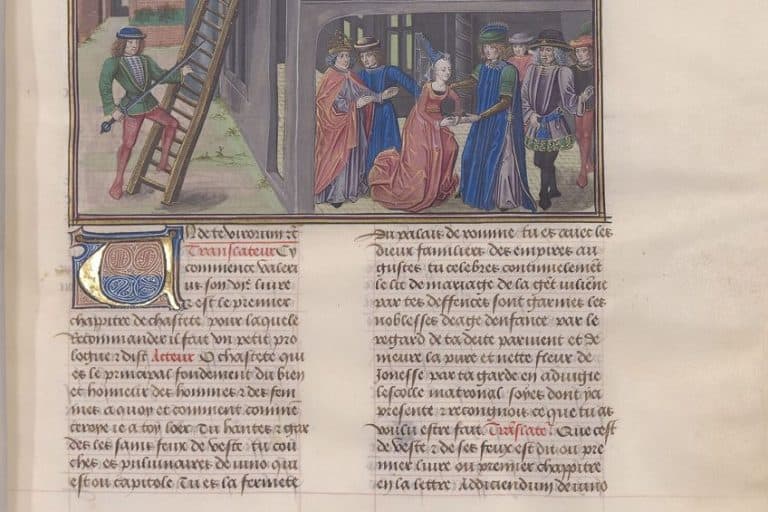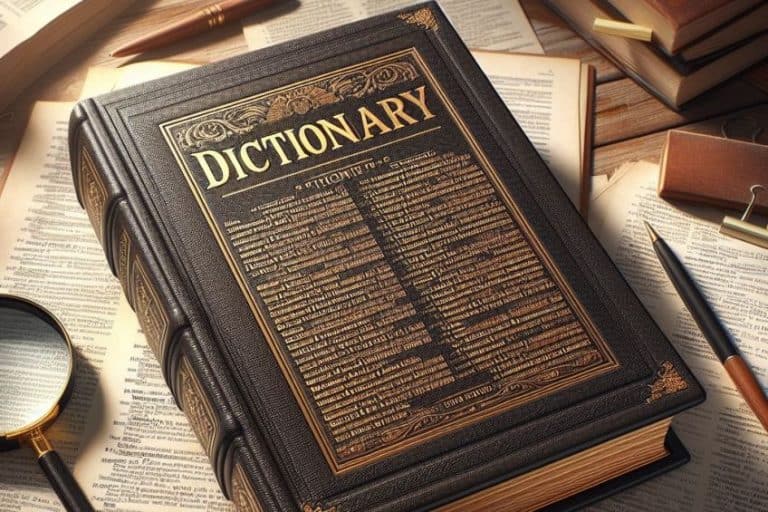Protest Poetry – The Characteristics of Social Activism Prose
There are loads of types of poetry out there and they all exist for many reasons. Sometimes we want a nice little poem about how pretty the flowers are, and the Romantics are there to do just that for you, but poetry can do so much more. This is where protest poetry enters the picture. Today, I will be going over the purpose of protest poetry, some of the standard characteristics that might be found, the use of protest poetry in music, and a number of protest poem examples to show how it can be done in practice. This is a robust topic, and we don’t have much time, so let’s jump right in!
Table of Contents
A Look at Protest Poetry
When we think of poetry, many of us want to think of lovely things, but reality is often not all that lovely. It may be nice to write about daffodils or more universal concepts like love and death, but sometimes, we need to be specified. Sometimes we need to use poetry to scream about the hardships and injustices in the world. When colonized people are fighting against their oppressors, they do not have time for daffodils, and they will instead write about their direct experiences. This is what we will examine today.

Summary of Protest Poetry
We should all love a good summary. I certainly do! I have made use of summaries for years because students can learn a lot from them, and my old life as an English and literature teacher meant that I was handing these things out all the time. So, let’s keep that train going and jump into a good summary:
- Protest poetry is aimed at societal issues. The primary idea behind the protest poem is that it is directed at something very real. For instance, a protest poem will rail against police brutality, colonialism, gender-based violence, and so on.
- Protest poetry is usually written by marginalized groups. While anyone can theoretically write protest poetry, it is usually those affected by what they write who tend to write protest poems. Oppressed groups usually have more to say about oppression than those who are part of the oppressor group.
- Protest poetry is generally confrontational. The purpose of protest poetry, in many ways, is to force people to understand why the topic of the poem is important. This is generally best done by being very confrontational, provocative, and emotional.
This little summary has not given all that much information, but it has given at least some. There will be more to discuss in the sections below. We will even look at the kind of work that is produced by poets as diverse as Chris van Wyk, Maya Angelou, and Yuki Jackson.
There is much still to discuss.
The Purpose of Protest Poetry
While poetry can be about all manner of things, protest poetry generally has a very definitive aim. The purpose of protest poetry is to protest against whatever is the topic of the poem in question. This can mean showing and exploring injustices in the world, calling for empathy from those who are not affected by the things being discussed, vying for change, or simply airing out frustrations so that they can be understood on an emotional level.

Protest poems can be about anything, but those things are tangible realities for those who have experienced what is discussed. This is why many poets who have written protest poetry are those who have been subject to injustices. For instance, colonized people, those who fought against American segregation or South African Apartheid, women who have experienced gender-based violence, and so on. These poems want the reader to know and understand these concepts. There is no reason to flee from the reality of the situation because that will not fix anything.
The purpose of protest poetry, in many ways, is to make protest poetry redundant. No one wants to write protest poetry; they write protest poems because they need to. Protest poetry recounts the realities that people face, and the reality of the world can often be an immensely horrible thing. You cannot expect someone who has seen their friends killed by an oppressive system to want to write about daffodils.
They can write about daffodils when their friends have stopped being shot.
The Characteristics of Protest Poetry
Protest poetry, because of its particular goals, is usually oriented around a very specific kind of structure. One of the common elements you will find in many protest poems is the use of provocative language. Protest poems do not want to beat around the bush. If you want to enact change, you cannot say things in a polite way, you need to scream them. You need to be emotional and angry. These are the sorts of things you will generally find in examples of protest poetry.

However, it is worth noting that there are no types of poems that need to be used in protest poetry. For instance, a protest poem could make use of a free verse structure or a sonnet. It does not actually matter, and there can be the use of rhyme and meter, or not. There are no rules with regard to these elements of poetry when it comes to protest poetry in particular.
The Use of Protest Poetry in Music
Music and poetry have long had connections to one another, and this is often because the earliest poetry was generally set to music and there is significant argument that could be made that all lyric-based music does make use of poetry. However, what about on a more specific level when it comes to protest poetry and music? Well, in that case, we can see many examples of overlap.
When it comes to the lyrics that are used in examples of protest music, there are definitive uses of poetic ideas and techniques.
For instance, lyrics often make use of poetic elements like rhyme and meter. A common place for contemporary protest music can be found in rap music, and rap makes use of complex rhyme and meter far more than most other forms of lyric-based music. We can see that protest poetry and protest music tend to have the same aims. They are both trying to raise awareness of injustices, fight against them, and encourage change. The purpose of the poets and the musicians is one and the same. An anti-war poet and an anti-war musician are arguing against the same thing, after all.
A Few Protest Poem Examples
There are so many different protest poems in the world and we’ll just check out a few of them. These poems are little more than a tiny subset of the kinds of poems that can be found in the world because all over the world, we can find those who have made use of poetry to stand against some of the injustices of the world, such as Maya Angelou from the 1960s until the 2000s, or the work of contemporaries like Yuki Jackson and her focus on empowerment. There are many all over the world who have embraced protest poetry in so many different ways.

In detention (1980) by Chris van Wyk
| Date Published | 1980 |
| Type of Poem | Protest poem |
| Rhyme Scheme | None |
| Meter | None |
| Topic | Suspicious deaths of prisoners |
In detention is likely one of the most famous anti-Apartheid protest poems. This particular poem makes use of a repetitive structure in which various excuses for why prisoners have died are reused over and over again in increasingly ridiculous combinations. The purpose of the poem was to highlight the absurdity of the ways that political prisoners kept “having accidents” while in police custody in the country.
Poems like this can serve as a means of emphasizing specific injustices in the world that need to be stopped.
Caged Bird (1983) by Maya Angelou
| Date Published | 1983 |
| Type of Poem | Free verse |
| Rhyme Scheme | Irregular |
| Meter | Variable |
| Topic | Oppression |
Caged Bird is likely one of the most famous American protest poems. In this case, it makes use of the metaphor of a bird that has been caged. The bird is representative of oppressed and marginalized people, and the poem explores the way in which the bird, while caged in its circumstances, can still sing. The song is about the dream of freedom and the desire for all to change.
The bird’s song can serve as a rallying cry to lead to the kinds of changes that would lead to the bird, and all other birds, no longer being caged.

I look at the world (2009) by Langston Hughes
| Date Published | 2009 |
| Type of Poem | Free verse poem |
| Rhyme Scheme | None |
| Meter | None |
| Topic | Refusal to remain passive |
I look at the world is a poem that angrily explores the way that African American people had been forced to look at the world. The poem opens with this kind of observation, that there is a way that black Americans were forced into situations in which they had less than their white counterparts. However, the later parts of the poem serve as a call to action. The poem wants this reality to change. It wishes to protest against the injustices of the world and to force them to change.

Protest poetry has been around for a long time and there are numerous ways that it can be classified. For instance, protest poems can be about any number of topics that are worth protesting against, and any poem that has fought against injustice could be seen as a kind of protest poem. This article has attempted to explore this broad category in some level of depth, and, hopefully, through the exploration of the purpose, characteristics, and examples of protest poems, a good understanding has been reached. However, when reading protest poems, always remember to look at the societal context that gave birth to said example of protest poetry.
Frequently Asked Questions
What Is Protest Poetry?
Protest poetry is a relatively broad poetic category that can incorporate many other poetic forms into itself. The primary idea behind protest poetry is that it is focused on protesting real-world issues. This can mean that it argues against injustices in the world, attempts to elicit empathy for wrongs that have been committed, encourages others to fight for what is right, and so on. The main thrust of protest poetry is that it is, as the name suggests, protesting against something in society.
What Are the Characteristics of Protest Poetry?
When it comes to the styles that are commonly adopted in protest poetry, there are no real rules. For instance, you can use a sonnet or anything else if you like. However, protest poems often make use of provocative language, simple delivery, emotionality, and so on. They do not want to be analyzed to find the meaning buried within – they want to be understood. The point is for people to know what is being protested against.
Which Groups Usually Write Protest Poetry?
Anyone can write protest poetry, but those who typically write this kind of poetry can be those from marginalized groups, such as African American poets before, during, and after the Civil Rights Movement who wrote to protest against the injustices committed against black Americans, or feminist poets who write to strike back against patriarchal beliefs or violence against women. There is not a group that is excluded from writing protest poetry, but those who have privilege and nothing to protest against are not usually those who write protest poems.
What Are Some Examples of Protest Poems?
Examples of protest poems can be found all over the world, and they will all explore different topics. Some famous examples include In detention (1980) by Chris van Wyk, Caged Bird (1983) by Maya Angelou, and I look at the world (2009) by Langston Hughes. These poems are hardly indicative of the whole that is protest poetry, but they should be a good, generalized overview. There’s far more out there to find if you are interested in protest poems.
How Is Protest Poetry Used in Music?
There has been a significant influence of protest poetry on music. There are many songs by many musicians that have used protest in some way or another. For instance, N.W.A. has protested against police brutality, Guns ‘n Roses have protested against war, and so on. The use of emotionality, a desire to educate about the issues at hand, and a push for resistance have all formed part of the protest songs that have been inspired by the works of earlier protest poets.
Justin van Huyssteen is a freelance writer, novelist, and academic originally from Cape Town, South Africa. At present, he has a bachelor’s degree in English and literary theory and an honor’s degree in literary theory. He is currently working towards his master’s degree in literary theory with a focus on animal studies, critical theory, and semiotics within literature. As a novelist and freelancer, he often writes under the pen name L.C. Lupus.
Justin’s preferred literary movements include modern and postmodern literature with literary fiction and genre fiction like sci-fi, post-apocalyptic, and horror being of particular interest. His academia extends to his interest in prose and narratology. He enjoys analyzing a variety of mediums through a literary lens, such as graphic novels, film, and video games.
Justin is working for artincontext.org as an author and content writer since 2022. He is responsible for all blog posts about architecture, literature and poetry.
Learn more about Justin van Huyssteen and the Art in Context Team.
Cite this Article
Justin, van Huyssteen, “Protest Poetry – The Characteristics of Social Activism Prose.” Art in Context. February 20, 2024. URL: https://artincontext.org/protest-poetry/
van Huyssteen, J. (2024, 20 February). Protest Poetry – The Characteristics of Social Activism Prose. Art in Context. https://artincontext.org/protest-poetry/
van Huyssteen, Justin. “Protest Poetry – The Characteristics of Social Activism Prose.” Art in Context, February 20, 2024. https://artincontext.org/protest-poetry/.









